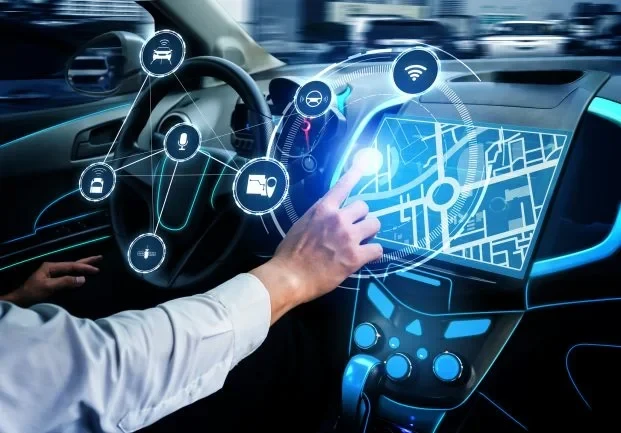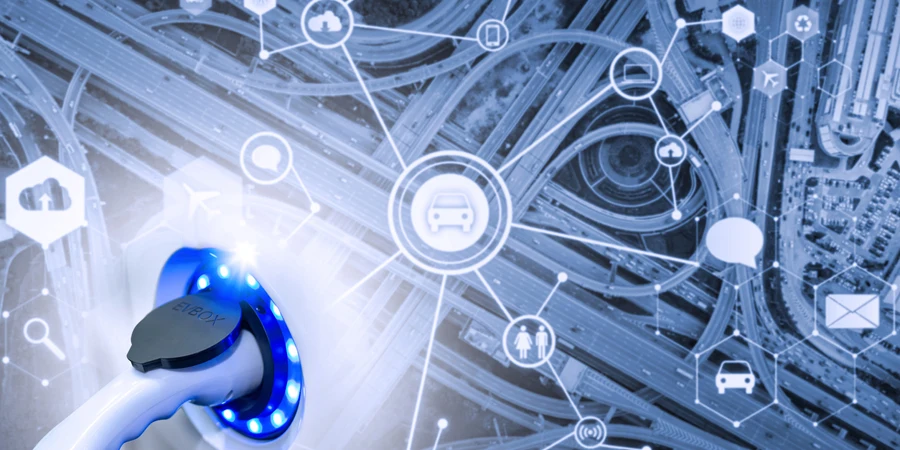Electric utilities are pushing for greater data sharing between cars and infrastructure, says Eurelectric secretary-general Kristian Ruby.

In one sense, the electric vehicle revolution is about hardware. It requires new kinds of cars to be built, powered by expensive and complicated batteries, which must be recharged by new types of infrastructure necessitating new grid equipment. However, in a less visible sense, it is also about software – the systems sending data around inside the electric vehicle.
The question is whether and how that data will exit the vehicle in a useful way. Electric mobility presents a unique challenge in that it must bridge the world of transport, energy and the built environment. Creating that bridge is going to require data interoperability and information-sharing between stakeholders, something that has been a struggle thus far. This has particularly been the case for the auto industry and utilities.
“These are two industries that have historically not been very close to each other,” explains Kristian Ruby, secretary-general of the Brussels-based industry association Eurelectric, which represents electric utilities across Europe. “There are some examples of direct cooperation between auto manufacturers and utilities, but it is not good enough yet. We should be on a par with the relationship that has been built over more than a century between fuel suppliers, their service stations and cars. We need to replicate that experience for electric cars.”
Eurelectric has launched a push to improve data sharing between electric vehicles, electric utilities and other parts of the value chain. It has carried out research with consultancy Ernst & Young on the subject, which will be presented at its flagship EVision event in Brussels on 6 March. The research maps out the current state of data sharing and how things can be improved.
“[In the report,] we are laying out how the emerging ecosystem of e-mobility can get wired up – what kind of data flows exist today and what kind of data flows will be needed for these things to evolve in a turbocharged mode,” Ruby tells Energy Monitor in an interview ahead of the event. “You could revert to existing industry standards for some of it, but some of it will need industry cooperation between manufacturers of cars, charge point operators and utilities to agree on what will be the valuable data we can exchange while respecting the privacy of the individual driver.”
Data needs and availability in the electric vehicle supply chain
There is already a lot of data being generated by electric vehicles – so much so that there have even been rising concerns about them being used for espionage. Some US embassy compounds are not allowing electric cars inside, for instance. The cars are gathering data about driving habits, recharging needs and weight patterns. The vehicle manufacturers can use that data to improve their services and their vehicles. However, if the data isn’t being shared with the electric utilities, then it will be of no use in improving the grid and recharging services.
“Everybody’s been waiting for the cars. Now we have scores of incredibly cool cars out there from big brands – one in five cars sold in Europe today is electric,” says Ruby. “To move from early adoption… to mass adoption of electromobility, we now need to work on the experience to convince those who don’t really care that e-mobility is as good or better than traditional mobility. That has to do with overcoming peoples’ fears, which are mainly about range anxiety and the ability to recharge.”
There are several types of user in the electric vehicle data value chain who will each have their own needs for generating and using data, Ruby says. There are the drivers, who generate data from driving their vehicle but also need data to know where and when to recharge. Then there are the e-mobility service providers (eMSPs) that establish a charging network and the charge point operators (CPOs) that operate those stations. Drivers could share their vehicle and battery data with eMSPs and CPOs in return for reliable route planning and other value-add services such as providing food or activities for people while they charge.
Then there are the distribution system operators (DSOs) that must make significant investments in the electricity grid and play an important role in connecting charging points to medium and low-voltage grids. Data can provide DSOs with the potential for real-time insights into grid performance and would let them have more proactive grid management and better electric vehicle integration. Then there are urban planners, which need the data to better understand electric vehicle hotspots and usage trends so they can strategically deploy infrastructure in areas where it is most needed. The key to all this data-sharing is the automakers, who must grant access to in-vehicle data, allowing other third-party service providers to detect and rectify faults or improve battery design and overall performance, Ruby argues.

That last part has been tricky, with a natural competitiveness instinct inhibiting collaboration between automakers. For instance, right now different companies provide different charging technologies – and drivers can only use the charging points that correspond to their car. Roaming platforms can sometimes connect CPOs with eMSPs and facilitate interoperability, but this has been slow going.
“Imagine you were in a combustion engine car and you only have a subscription to BP tanks,” said Ruby. “You pass Circle K, you pass Shell, but unfortunately you are not allowed to stop and fill your tank there. That would be an unacceptable experience for a combustion engine car driver. So it is about establishing that openness of standards: that would go a long way to ease the range anxiety.”
Concerns about data privacy
The other obstacle is from the drivers themselves and their privacy concerns. Not everyone thinks that handing over their driving data in exchange for better access to an electric vehicle charging infrastructure is a fair deal – or they would rather have other people do it, but still benefit from the infrastructure improvements. That is why automakers have to make sure that they are giving clear and reassuring messages to their customers about when and how their data will be used.
“This [privacy] balance has to be struck [for electric vehicles] just like we have to find that balance in relation to media and our smartphones, etc – the devices we use have become so much more complex and able that it is also incredible how much data they can actually collect,” says Ruby. “I was told that the new electric Mercedes has more coding lines than an F16, just to give you an idea of how technologically advanced the new electric cars are.
“You very quickly come into some delicate legal conundrums such as the data that’s been gathered in the immediate moments before a major car accident. Who owns that data, and who is obliged to hand it over to whom? There are plenty of privacy issues that need to be considered, but the fact that we are getting into such a richness of data availability doesn’t hinder the ability of us as a community of companies to agree on standards for anonymised data transfer.”
There are already some successful examples of data collaboration that have improved electric vehicle infrastructure. Amazon launched an open data mash-up where it showed all the delivery patterns it has and how they have changed over time. They made that heat map available to utilities so they could provide charging at places that would be convenient for Amazon delivery vehicles.
The EU’s Alternative Fuels Infrastructure Directive already obliges any operator of liquid fuel supply to also have charging points at their facilities, but the Eurelectric report will suggest that these requirements should extend into cooperation between all these different players. Because even if Europe succeeds in building many thousands of electric charging point stations, it won’t do much good if they are not in the right place or if people can only use certain ones.
Source from Just Auto
Disclaimer: The information set forth above is provided by just-auto.com independently of Alibaba.com. Alibaba.com makes no representation and warranties as to the quality and reliability of the seller and products.




